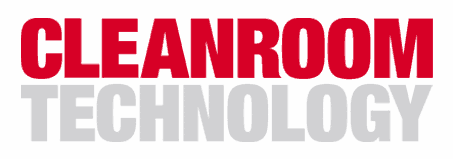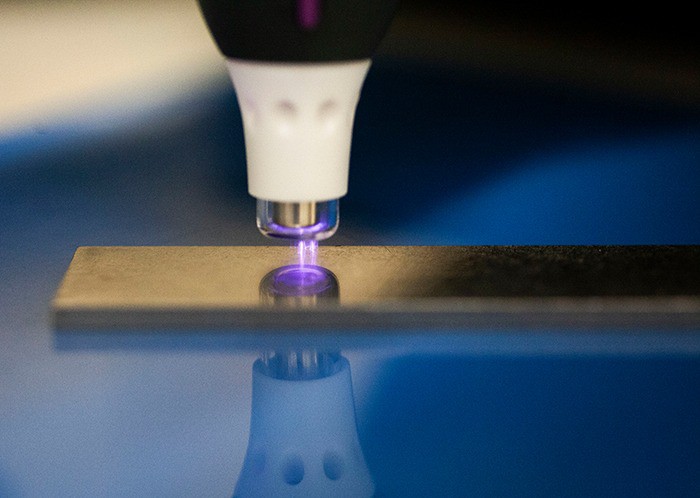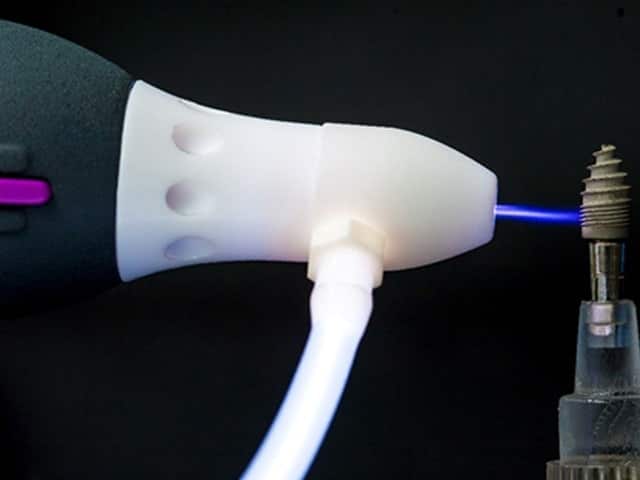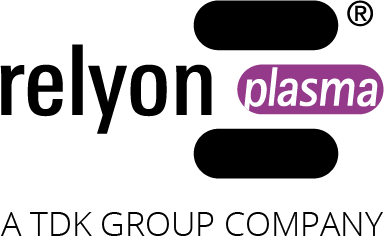Plasma technology: A versatile cleaning tool
Professional article: Cleanroom technology
Published: June 2019 – Cleanroom Technology
Author: Corinna Little

Surface activation, surface treatment
The quality of surfaces that are processed and used every day in hi-tech product manufacturing is of vital importance. Manufacturers want them to be easy to process so the print looks good, the coating is flawless, and the adhesive joints don’t break. The lab assistant needs sterile equipment and an excellent wettability of his petri dish for the agars.
These are just a few examples where atmospheric pressure plasma may be of assistance and in addition, it might also be a solution for reducing odours and germs in waste collectors.

Back to basics
When gas molecules are excited, either by an electrical arc or other discharge, they become highly reactive and the gas transcends into the state of a plasma. These reactive species can then interact with the top layers of polymer surfaces, activating them in a way which can remove thin layers of contaminants from inorganic surfaces such as glass, ceramic, metals or semiconductors. Oxygen species in the plasma are especially effective in reducing germs and odours.
The generation of atmospheric pressure plasma by means of an electrical arc is commonplace in jet plasma systems that are very well-established in the manufacturing industry.
The principle of this technology is based on an electrical arc
Temperatures within the plume range from around 200°C to over 700°C, while the arc itself is a couple of 1000°C. Since elevated temperatures accelerate chemical reactions, this plasma can be very effective for fine cleaning of substrates that are in of themselves not temperature sensitive.
This technology also allows for selective cleaning of different contaminants by means of the choice of process gas: while compressed dry air (CDA) plasma leads to the removal of organic residue, plasma with forming

For temperature-sensitive materials like polymers, this technology is no less applicable. By choosing a sufficient distance between the substrate and the plasma nozzle, as well as the right process speed (typically a couple of 100 mm/s), the surface energy is increased and thus the activated area shows better wettability and bonding can be improved. This is due to the functionalisation of the molecules’ end groups on the polymer surface by the plasma’s active species.
Aside from cleaning, this surface layer activity can also make them more susceptible to adhesives, varnishes, inks or coatings. This feature is not just useful in and of itself, it also can be used in a testing capacity.
Any overheating is typically counterproductive for this so-called surface activation. Since only the upper monolayers of the material are affected, the treatment can only be made visible by applying a liquid to the surface. By measuring the contact angle of deposited droplets, the surface energy can be determined. Test inks are an easy means of estimating the surface energy and revealing the increase of this value after the plasma treatment (see figure 2).
Avoiding the mess
Since the plasma system only consumes electrical power and process gas (for example CDA, nitrogen or forming gas) it is oftentimes preferred over wet chemical primers or solvents.
This characteristic also makes it attractive for in-line production considering the requirements for integrating the technology are limited to an exhaust or extraction system with typical flow rates of 30 to 50 m3/h and a relative movement between substrate and plasma plume. The latter can be
Innovations
There are, however, plasma sources that don’t require any HV cables, and are so compact that they can be used in handheld devices and even everyday objects. Here, the plasma generation is based on the piezo dielectric discharge (PDD technology) used in the CeraPlas piezoelectric transformer produced by TDK Electronics.

The cuboid device of only a couple centimetres in length transforms a low primary voltage into 10 kV to 15 kV at the tip, which leads to discharges at the four corners (see figure 3). This, in turn, ionises the ambient air around the device creating a highly effective atmospheric plasma that doesn’t exceed temperatures of 50°C.
Integration into the handheld module allows for flexible use of atmospheric plasma in laboratories, research and development departments, manufacturing of small series, dental and medical technology and many more.
Applications include improving adhesion on various materials, like PDMS on glass or glueing FEP, as well as increasing the wettability of Petri dishes among others.
For electrically conductive substrates, the so-called near-field nozzle is used to generate a dielectric barrier discharge (DBD) on materials such as metals (see figure 1), semiconductors or carbon fibre composites to improve their surface properties for processes like bonding, coating, printing, glueing or varnishing.
Another special nozzle allows for the alteration of the plasma chemistry by inserting different gases into the discharge. The insertion head can be removed to use the discharge needle of the nozzle to treat small holes, cavities
Apart from the improvement of surface properties, the plasma generated in the piezo device is highly efficient in the production of chemical species like ozone. These molecules react with microorganisms and odours, reducing them significantly.

This aspect of the plasma is not only used for dental implants in combination with the surface activation for better wettability (figure 4) but also in a variety of other applications.
Since the plasma module is so compact and needs little power input, a battery-driven version has recently been integrated into the waste collector Hailo ProfiLine Fresh L.
The module has now been integrated into the lid of the waste collector and once it is closed, produces chemical species that react with the waste disposed of in the collector. This leads to a reduction in unpleasant
Due to the easy integration of the piezo module, plenty of applications come to mind: from food decontamination over




